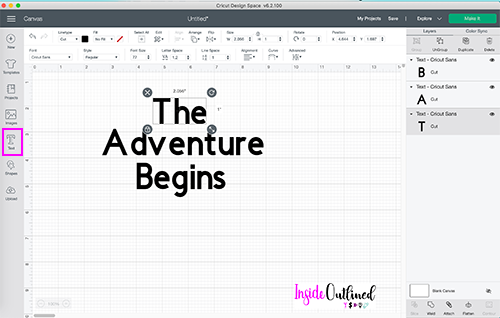
The number of objects depends on the length of your text because each letter turned into an individual object. You will see that the text turned into a group of objects. We need to switch to the Select Tool (keyboard shortcut: S).Īfter selecting, have a look at the info box on the bottom. In the top menu click on Path and then select Object to Path (keyboard shortcut: Shift+Ctrl+C).Īt first, it might seem that nothing has changed, but when you look closely, you will notice two things: First you cannot select or edit the text with the Text Tool anymore. (If your text is not selected, simply hover over it with your mouse and then left-click once.) Your text is selected when there’s a dotted bounding box around it. To do this make sure your text is selected. Next, we need to turn the text into a path object. You can use the drop-down list on the top left to select your desired font. To create the text, select the Text Tool (keyboard shortcut: T), click somewhere on the canvas, and type your text. Step 1: Create Some Textįirst, we need some text to work with. The software I am using is Inkscape, a free and open-source vector graphics editor. In this post, I will explain how you can add missing connections and turn your text into one completely connected shape. If they work for you (or if they don't!), drop a comment below.In my previous post, I showed you my favorite Connected Fonts for laser cutting and mentioned that unfortunately there are only a few fonts where really all letters connect to each other. Fine, but my client didn't have this option! If this is the situation you find yourself in, here are instructions for adding new fonts that will be read by Inkscape (and Gimp). This means when you have downloaded a font, instead of double-clicking then clicking Install you have to right-click and choose Install for all users instead.

In my client's case, it was because the fonts were not installed for all users. The new solution involves nothing more complicated (on Windows) than installing them in the standard fonts directory (C:WindowsFonts) but it also seems that in some cases this also fails to work. Typical! The question then, is how to solve this persistent issue with Inkscape when the SkyFonts (which I find has become unreliable and unstable) workaround doesn't work? When a client was asked me about this, I directed them to my original post, only to discover that those instructions no longer work.

I wrote a post a few months ago about using SkyFonts to install new fonts in Inkscape, a freeware graphic design package that is a great substitute for Adobe Illustrator and Corel Draw.


 0 kommentar(er)
0 kommentar(er)
